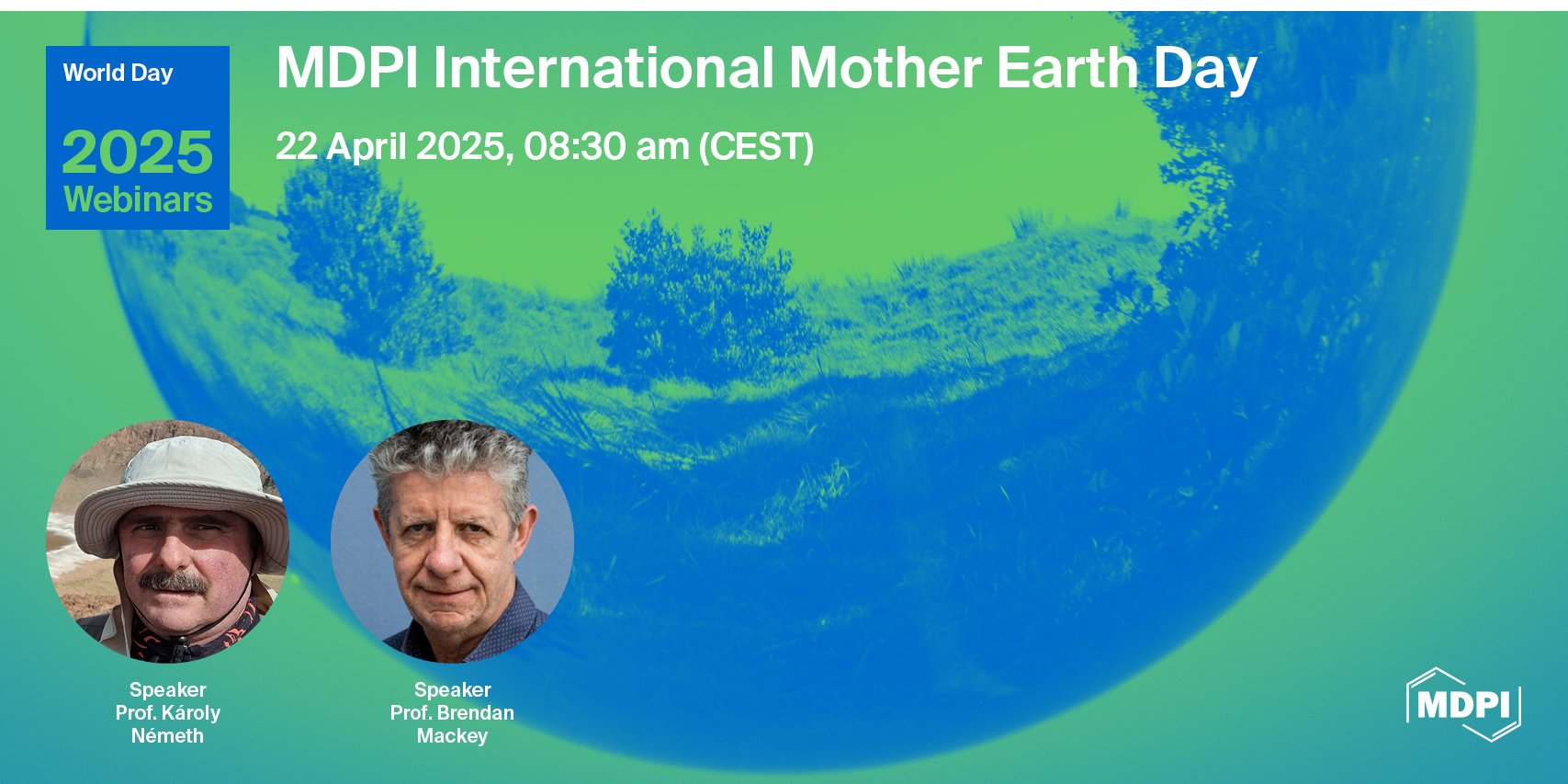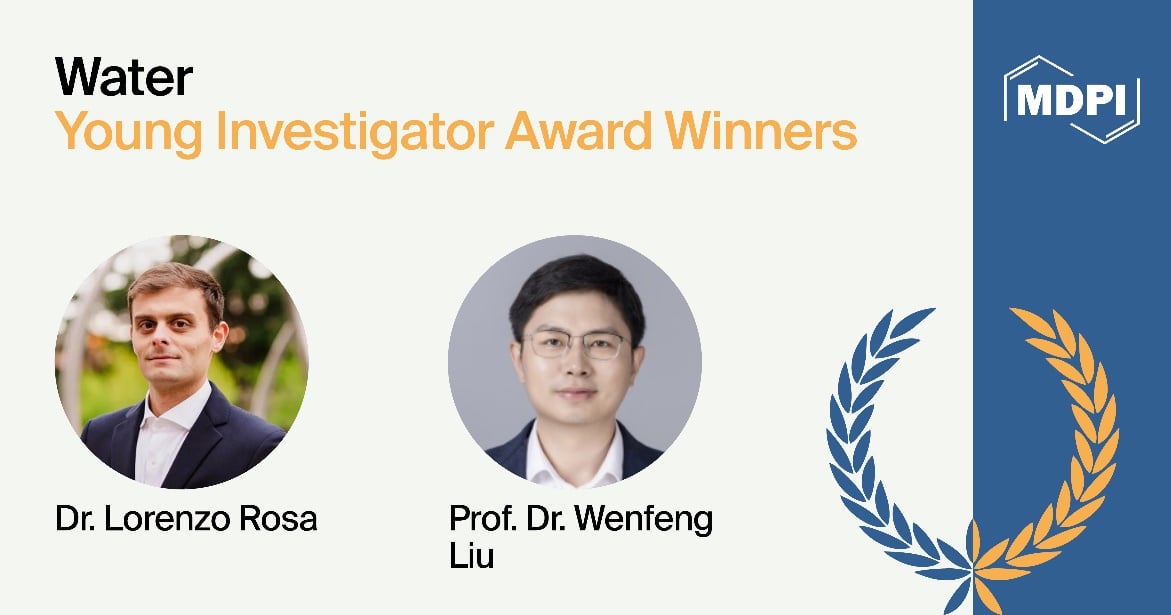-
 Particulate and Dissolved Metals in the Pearl River Estuary, China—Part 1: Spatial Distributions and Influencing Factors
Particulate and Dissolved Metals in the Pearl River Estuary, China—Part 1: Spatial Distributions and Influencing Factors -
 Assessing the Relationship Between Groundwater Availability, Access, and Contamination Risk in Arizona’s Drinking Water Sources
Assessing the Relationship Between Groundwater Availability, Access, and Contamination Risk in Arizona’s Drinking Water Sources -
 Predicting Surface Stokes Drift with Deep Learning
Predicting Surface Stokes Drift with Deep Learning -
 Flood Susceptibility Analysis with Integrated Geographic Information System and Analytical Hierarchy Process
Flood Susceptibility Analysis with Integrated Geographic Information System and Analytical Hierarchy Process -
 Macrophytes and Phytoplankton, Two Primary Antithetical Producers in Degraded Water Systems
Macrophytes and Phytoplankton, Two Primary Antithetical Producers in Degraded Water Systems
Journal Description
Water
Water
is a peer-reviewed, open access journal on water science and technology, including the ecology and management of water resources, and is published semimonthly online by MDPI. Water collaborates with the Stockholm International Water Institute (SIWI). In addition, the American Institute of Hydrology (AIH), The Polish Limnological Society (PLS) and Japanese Society of Physical Hydrology (JSPH) are affiliated with Water and their members receive a discount on the article processing charges.
- Open Access— free for readers, with article processing charges (APC) paid by authors or their institutions.
- High Visibility: indexed within Scopus, SCIE (Web of Science), Ei Compendex, GEOBASE, GeoRef, PubAg, AGRIS, CAPlus / SciFinder, Inspec, and other databases.
- Journal Rank: JCR - Q2 (Water Resources) / CiteScore - Q1 (Water Science and Technology)
- Rapid Publication: manuscripts are peer-reviewed and a first decision is provided to authors approximately 17.5 days after submission; acceptance to publication is undertaken in 2.7 days (median values for papers published in this journal in the second half of 2024).
- Recognition of Reviewers: reviewers who provide timely, thorough peer-review reports receive vouchers entitling them to a discount on the APC of their next publication in any MDPI journal, in appreciation of the work done.
- Companion journals for Water include: GeoHazards.
Impact Factor:
3.0 (2023);
5-Year Impact Factor:
3.3 (2023)
Latest Articles
Communicating About Single-Use Bottled Water to Mitigate Ecosystem Pollution
Water 2025, 17(9), 1298; https://doi.org/10.3390/w17091298 (registering DOI) - 26 Apr 2025
Abstract
The use of plastics is ingrained in modern lifestyles, yet plastic waste contaminates ecosystems and harms human health. Single-use bottled water is a substantial contributor to global plastic use despite many sustainable alternatives. The purpose of this study was to examine if knowledge,
[...] Read more.
The use of plastics is ingrained in modern lifestyles, yet plastic waste contaminates ecosystems and harms human health. Single-use bottled water is a substantial contributor to global plastic use despite many sustainable alternatives. The purpose of this study was to examine if knowledge, cognitive beliefs, affective beliefs, attitudes, and perceived access to clean water affected consumers’ intention to purchase single-use bottled water. Data were collected from Florida, Georgia, and Alabama residents using non-probability opt-in sampling. A hypothesized model was analyzed using confirmatory factor analysis and structural modeling in MPlus. Knowledge, cognitive beliefs, and affective beliefs accounted for 34.5% of the variance in attitudes. Additionally, these three constructs, along with the perceived access to clean water and attitudes, accounted for 31.9% of the variance in the intention to purchase single-use bottled water. All direct and indirect paths in the model were significant, indicating that communication targeting knowledge, cognitive beliefs, affective beliefs, attitudes, and the perceived access to clean water may shift the public sentiment. Key findings revealed that increasing consumers’ knowledge and decreasing beliefs about single-use bottled water decreased purchase intentions. The study results highlight the need for communication strategies that challenge emotional attachments and the perceived knowledge of single-use bottled water while emphasizing credible knowledge about the associated environmental and health impacts. Environmental communicators should explore generational differences related to affective beliefs regarding single-use bottled water to target messaging based on aesthetics.
Full article
(This article belongs to the Special Issue Integrated Approaches to Water Resources and Environmental Management: Innovations in Simulation and Impact Assessment)
►
Show Figures
Open AccessArticle
Geoinformation and Analytical Support for the Development of Promising Aquifers for Pasture Water Supply in Southern Kazakhstan
by
Sultan Tazhiyev, Yermek Murtazin, Yevgeniy Sotnikov, Valentina Rakhimova, Dinara Adenova, Makhabbat Abdizhalel and Darkhan Yerezhep
Water 2025, 17(9), 1297; https://doi.org/10.3390/w17091297 (registering DOI) - 26 Apr 2025
Abstract
Ensuring water resources for livestock production in Kazakhstan presents a multifaceted challenge. Pastoral systems in Southern Kazakhstan are facing a critical groundwater shortage, with 56.5% of pastures currently unused due to limited water access, jeopardizing around 2 million head of livestock and the
[...] Read more.
Ensuring water resources for livestock production in Kazakhstan presents a multifaceted challenge. Pastoral systems in Southern Kazakhstan are facing a critical groundwater shortage, with 56.5% of pastures currently unused due to limited water access, jeopardizing around 2 million head of livestock and the region’s food security. This study presents the first comprehensive groundwater assessment in over 40 years, integrating hydrochemical analysis (55 samples) and field surveys conducted in the Almaty and Zhetysu regions. Key findings include: the total water demand for livestock is estimated at 53,735 thousand m3/year, with approximately 40% of samples exceeding WHO guidelines for total mineralization. It was determined that 45% of exploitable groundwater reserves in the Almaty region and 15–17% in the Zhetysu region are suitable for irrigation. This study also provides updated hydrogeological data, identifying three priority aquifer systems. A novel Groundwater Sustainability Index for pastoral zones of Central Asia is introduced, demonstrating that strategic aquifer development could expand watered pastureland by 30–40%. These findings directly inform Kazakhstan’s Agricultural Development Plan through 2030 and provide a replicable framework for sustainable water management in arid regions. With 69,836 rural residents currently lacking access to safe water, our results underscore the urgent need for infrastructure investment to meet SDG 6 targets (ensure availability and sustainable management of water and sanitation for all).
Full article
(This article belongs to the Section Hydrogeology)
►▼
Show Figures
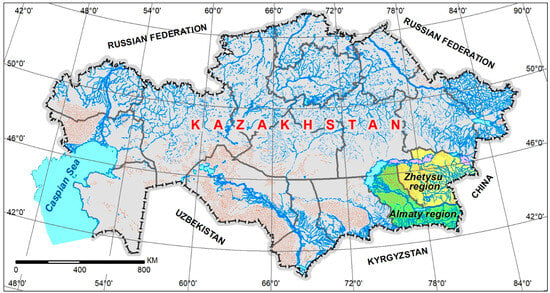
Figure 1
Open AccessArticle
N-Doped Modified MoS2 for Piezoelectric–Photocatalytic Removal of Tetracycline: Simultaneous Improvement of Photocatalytic and Piezoelectric Properties
by
Donghai Yuan, Chao Guo, Yuting Ning, Xinping Fu, Xiuqing Li, Xueting Xu, Chen Wang, Yingying Kou and Jun Cui
Water 2025, 17(9), 1296; https://doi.org/10.3390/w17091296 (registering DOI) - 26 Apr 2025
Abstract
Piezoelectric and photocatalytic technologies use mechanical and light energy to decompose environmental contaminants, demonstrating a beneficial synergistic impact. This investigation employs a two-step hydrothermal-calcination technique to synthesize N-doped MoS2 photocatalytic materials. The ideal catalyst, N-MoS2-3, utilizing the synergistic effect of
[...] Read more.
Piezoelectric and photocatalytic technologies use mechanical and light energy to decompose environmental contaminants, demonstrating a beneficial synergistic impact. This investigation employs a two-step hydrothermal-calcination technique to synthesize N-doped MoS2 photocatalytic materials. The ideal catalyst, N-MoS2-3, utilizing the synergistic effect of piezoelectric–photocatalysis processes, attained a TC degradation rate of 90.8% in 60 min. The kinetic constant (0.0374 min−1) is 1.75 times greater than the combined rates of single photocatalysis and piezoelectric catalysis, indicating a notable synergistic impact. The material has 80% degradation efficiency after five cycles, indicating its remarkable resilience. Mechanistic investigations reveal that nitrogen doping establishes an internal electric field by modulating the S-Mo-S charge distribution. Photogenerated electrons move to generate •O2−, while holes accumulate internally. The ultrasound-induced piezoelectric polarization field interacts with the photogenerated electric field in reverse, thereby synergistically improving carrier separation efficiency and facilitating redox processes. This study emphasizes the viability of non-metal doping as a method for modifying the properties of two-dimensional materials, offering a novel approach to enhance the synergistic attributes of piezoelectric and photocatalytic processes. This technology possesses significant promise for environmental restoration through the utilization of solar and mechanical energy.
Full article
(This article belongs to the Section Urban Water Management)
►▼
Show Figures
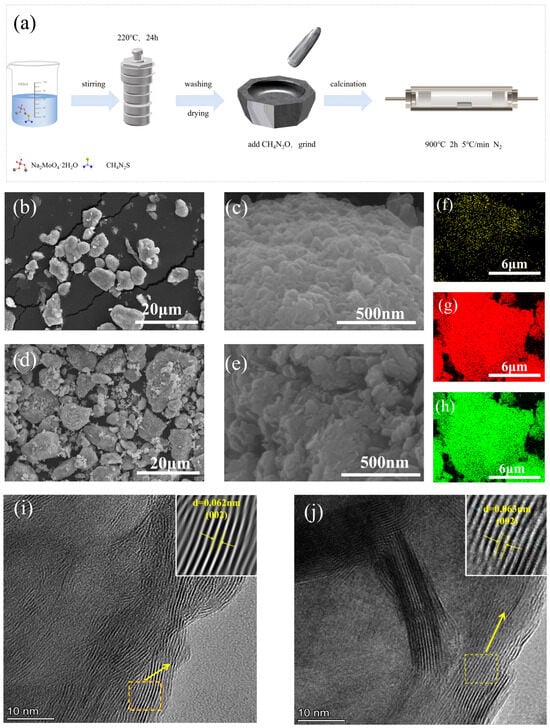
Figure 1
Open AccessArticle
Heavy Metals in Sediments of the Yangtze River, Poyang Lake and Its Tributaries: Spatial Distribution, Relationship Analysis and Source Apportionment
by
Yangyang Chi, Jiayi Wang, Jiale Bi, Tong Liu, Meijing Huang, Gang Li, Yan Ma and Bo-Tao Zhang
Water 2025, 17(9), 1295; https://doi.org/10.3390/w17091295 (registering DOI) - 26 Apr 2025
Abstract
The concentration, spatial distribution characteristics, river–lake relationship analysis and source apportionment of heavy metals in the sediments of the Yangtze River, Poyang Lake and its tributaries were studied in this work. Heavy metals were detected more frequently in the sediments of the Yangtze
[...] Read more.
The concentration, spatial distribution characteristics, river–lake relationship analysis and source apportionment of heavy metals in the sediments of the Yangtze River, Poyang Lake and its tributaries were studied in this work. Heavy metals were detected more frequently in the sediments of the Yangtze River compared with the sediments of Poyang Lake and its tributaries. V, Cr, Pb and Ni were the dominant heavy metals in Poyang lake, with V being the most abundant in the lower Yangtze River, Poyang Lake and its tributaries. As, Cu, Ni and V showed similar distribution patterns, with a fan-shaped increasing trend in the southwestern area of Poyang Lake. The spatial distribution of Cr, Hg, Pb and Cd showed a large spatial variability with a decreasing distribution from the northwest to the southeast of the lake. The heavy metals in the sediments of Poyang Lake are related to those in its tributaries. The organic matter, oxidation-reduction potential and depth of sediments are correlated with the heavy metals in sediments. Mining, industrial and road traffic sources were the main sources of heavy metals in the study area. Except for Cd and Hg, most heavy metals in Poyang Lake exhibited a low ecological risk in an environmental evaluation. The results of this study might guide future studies on heavy metals in the sediments of Poyang Lake.
Full article
(This article belongs to the Section Water Quality and Contamination)
►▼
Show Figures
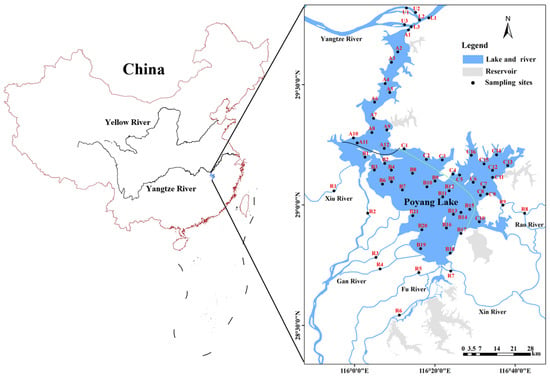
Figure 1
Open AccessReview
Distribution Characteristics and Driving Mechanisms of Organic Matter in Sediment of Lakes in China: A Review
by
Chun Zhao, Fuyuan Ran, Sihong Liu, Liujiang Wang and Chunzhen Fan
Water 2025, 17(9), 1294; https://doi.org/10.3390/w17091294 (registering DOI) - 26 Apr 2025
Abstract
Sediment is a core part of lake ecosystems, and its organic matter (OM) content is a key indicator of lake ecological health and regional carbon cycling. OM provides nutrients for phytoplankton and algae in water, thereby influencing the degree of lake eutrophication. However,
[...] Read more.
Sediment is a core part of lake ecosystems, and its organic matter (OM) content is a key indicator of lake ecological health and regional carbon cycling. OM provides nutrients for phytoplankton and algae in water, thereby influencing the degree of lake eutrophication. However, excessively high OM content may trigger water eutrophication, alter sediment’s physical and chemical properties, and ultimately threaten the stability and health of ecosystems. This study innovatively selected Poyang Lake, Taihu Lake, Qinghai Lake, and Hulun Lake from China’s four major geographical regions to systematically investigate sediments’ OM content, sources, and distribution characteristics at different times. The results showed that the organic matter content of sediments in lakes from different regions varied significantly and was influenced by multiple factors, such as watershed characteristics, eutrophication levels, human activities, and climate change. Poyang Lake and Taihu Lake, characterized by high levels of agricultural activities and urbanization within their basins, exhibit significant fluctuations in organic matter content, with total organic carbon (TOC) levels ranging from 0.35% to 2.9% and 0.7% to 2.4%, respectively. In contrast, Qinghai Lake and Hulun Lake, influenced by natural conditions and ecological policies, show relatively stable TOC levels, ranging from 1.3% to 2.75% and 1.25% to 3.58%, respectively. By analyzing sediments’ OM content and combining methods such as organic carbon, nitrogen isotopes, and organic C/N ratios, it is possible to effectively assess the ecological health of lakes, provide critical data support for pollution control, and play a significant role in carbon cycle management.
Full article
(This article belongs to the Special Issue Sustainable Water Treatment Systems: Green Infrastructure and Bioremediation)
►▼
Show Figures

Figure 1
Open AccessArticle
Prediction of Shallow Landslide Runout Distance Based on Genetic Algorithm and Dynamic Slicing Method
by
Wenming Ren, Wei Zhou, Zhixiao Hou and Chuan Tang
Water 2025, 17(9), 1293; https://doi.org/10.3390/w17091293 (registering DOI) - 26 Apr 2025
Abstract
►▼
Show Figures
Shallow landslides are often unpredictable and seriously threaten surrounding infrastructure and the ecological environment. Traditional landslide prediction methods are time-consuming, labor-intensive, and inaccurate. Thus, there is an urgent need to enhance predictive techniques. To accurately predict the runout distance of shallow landslides, this
[...] Read more.
Shallow landslides are often unpredictable and seriously threaten surrounding infrastructure and the ecological environment. Traditional landslide prediction methods are time-consuming, labor-intensive, and inaccurate. Thus, there is an urgent need to enhance predictive techniques. To accurately predict the runout distance of shallow landslides, this study focuses on a shallow soil landslide in Tongnan District, Chongqing Municipality. We employ a genetic algorithm (GA) to identify the most hazardous sliding surface through multi-iteration optimization. We discretize the landslide body into slice units using the dynamic slicing method (DSM) to estimate the runout distance. The model’s effectiveness is evaluated based on the relative errors between predicted and actual values, exploring the effects of soil moisture content and slice number on the kinematic model. The results show that under saturated soil conditions, the GA-identified hazardous sliding surface closely matches the actual surface, with a stability coefficient of 0.9888. As the number of slices increases, velocity fluctuations within the slices become more evident. With 100 slices, the predicted movement time of the Tongnan landslide is 12 s, and the runout distance is 5.91 m, with a relative error of about 7.45%, indicating the model’s reliability. The GA-DSM method proposed in this study improves the accuracy of landslide runout prediction. It supports the setting of appropriate safety distances and the implementation of preventive engineering measures, such as the construction of retaining walls or drainage systems, to minimize the damage caused by landslides. Moreover, the method provides a comprehensive technical framework for monitoring and early warning of similar geological hazards. It can be extended and optimized for all types of landslides under different terrain and geological conditions. It also promotes landslide prediction theory, which is of high application value and significance for practical use.
Full article

Figure 1
Open AccessArticle
Groundwater Quantity and Quality Management in a Mountainous Aquifer System in NE Greece
by
Ismail Empliouk, Ioannis Gkiougkis, Adam Adamidis, Ilias Siarkos, Andreas Kallioras, Dimitrios Kaliampakos and Fotios-Konstantinos Pliakas
Water 2025, 17(9), 1292; https://doi.org/10.3390/w17091292 - 25 Apr 2025
Abstract
This research work investigates the Myki Municipality’s aquifer system in the mountainous region of Xanthi Prefecture, Northeast Greece, with regard to the area’s groundwater exploitation and management requirements for drinking water supply. During the period 2021–2023, the work involved (i) groundwater discharge measurements
[...] Read more.
This research work investigates the Myki Municipality’s aquifer system in the mountainous region of Xanthi Prefecture, Northeast Greece, with regard to the area’s groundwater exploitation and management requirements for drinking water supply. During the period 2021–2023, the work involved (i) groundwater discharge measurements and groundwater sampling from forty-seven (47) springs and five (5) groundwater wells, followed by groundwater chemical analyses; (ii) appropriate analysis, elaboration, and presentation of the results obtained; and (iii) formulation of related proposals that would improve the conditions of the water supply in the study area. The study revealed that water shortage circumstances exist in the study area, which may be due to low aquifer capacity in some areas, deficient groundwater recovery facilities, and water losses in the water supply network.
Full article
(This article belongs to the Special Issue Advancing Applications in Hydrogeochemical Processes in Groundwater Systems)
►▼
Show Figures
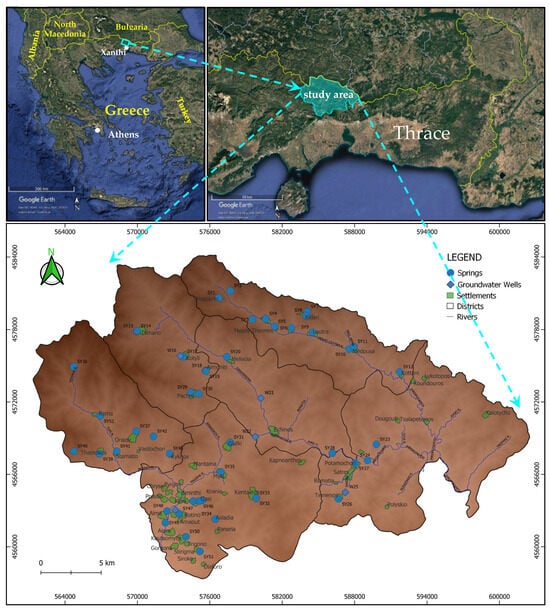
Figure 1
Open AccessReview
Review and Prospect of the Uncertainties in Mathematical Models and Methods for Yellow River Ice
by
Bing Tan, Chunjiang Li, Shengbo Hu, Zhijun Li, Honglan Ji, Yu Deng and Limin Zhang
Water 2025, 17(9), 1291; https://doi.org/10.3390/w17091291 - 25 Apr 2025
Abstract
Mathematical models and methods serve as fundamental tools for studying ice-related phenomena in the Yellow River. River ice is driven and constrained by hydrometeorological and geographical conditions, creating a complex system. Regarding the Yellow River, there are some uncertainties that manifest in unique
[...] Read more.
Mathematical models and methods serve as fundamental tools for studying ice-related phenomena in the Yellow River. River ice is driven and constrained by hydrometeorological and geographical conditions, creating a complex system. Regarding the Yellow River, there are some uncertainties that manifest in unique features in this context, including ice–water–sediment mixed transport processes and the distribution of sediment both within the ice and on its surface. These distinctive characteristics are considered to different degrees across different scales. Mathematical models for Yellow River ice developed over the past few decades not only encompass models for the large-scale deterministic evolution of river ice formation and melting, but also uncertainty parameter schemes for deterministic mathematical models reflecting the Yellow River’s particular ice-related characteristics. Moreover, there are modern mathematical results quantitatively describing these characteristics with uncertainty, allowing for a better understanding of the unique ice phenomena in the Yellow River. This review summarizes (a) universal equations established according to thermodynamic and hydrodynamic principles in river ice mathematical models, as well as (b) uncertainty sources caused by the river’s characteristics, ice properties, and hydrometeorological conditions, embedded in parametric schemes reflecting the Yellow River’s ice. The intractable uncertainty-related problems in space–sky–ground telemetric image segmentation and the current status of mathematical processing methods are reviewed. In particular, the current status and difficulties faced by various mathematical models in terms of predicting the freeze-up and break-up times, the formation of ice jams and dams, and the early warning of ice disasters are presented. This review discusses the prospects related to the uncertainties in research results regarding the simulation and prediction of Yellow River ice while also exploring potential future trends in research related to mathematical methods for uncertain problems.
Full article
(This article belongs to the Special Issue Mathematical, Physical, Chemical, and Biological Methods for Ice and Water Problems)
Open AccessArticle
Antecedent Rainfall Duration Controls Stage-Based Erosion Mechanisms in Engineered Loess-Filled Gully Beds: A Laboratory Flume Study
by
Yanjie Ma, Xingrong Liu, Heping Shu, Yunkun Wang, Jinyan Huang, Qirun Li and Ziyang Xiao
Water 2025, 17(9), 1290; https://doi.org/10.3390/w17091290 - 25 Apr 2025
Abstract
Engineered loess-filled gullies, which are widely distributed across China’s Loess Plateau, face significant stability challenges under extreme rainfall conditions. To elucidate the regulatory mechanisms of antecedent rainfall on the erosion and failure processes of such gullies, this study conducted large-scale flume experiments to
[...] Read more.
Engineered loess-filled gullies, which are widely distributed across China’s Loess Plateau, face significant stability challenges under extreme rainfall conditions. To elucidate the regulatory mechanisms of antecedent rainfall on the erosion and failure processes of such gullies, this study conducted large-scale flume experiments to reveal their phased erosion mechanisms and hydromechanical responses under different antecedent rainfall durations (10, 20, and 30 min). The results indicate that the erosion process features three prominent phases: initial splash erosion, structural reorganization during the intermission period, and runoff-induced gully erosion. Our critical advancement is the identification of antecedent rainfall duration as the primary “pre-regulation” factor: short-duration (10–20 min) rainfall predominantly induces surface crack networks during the intermission, whereas long-duration (30 min) rainfall directly triggers substantial holistic collapse. These differentiated structural weakening pathways are governed by the duration of antecedent rainfall and fundamentally control the initiation thresholds, progression rates, and channel morphology of subsequent runoff erosion. The long-duration group demonstrated accelerated erosion rates and greater erosion amounts. Concurrent monitoring demonstrated that transient pulse-like increases in pore-water pressure were strongly coupled with localized instability and gully wall failures, verifying the hydromechanical coupling mechanism during the failure process. These results quantitatively demonstrate the critical modulatory role of antecedent rainfall duration in determining erosion patterns in engineered disturbed loess, transcending the prior understanding that emphasized only the contributions of rainfall intensity or runoff. They offer a direct mechanistic basis for explaining the spatiotemporal heterogeneity of erosion and failure observed in field investigations of the engineered fills. The results directly contribute to risk assessments for land reclamation projects on the Loess Plateau, underscoring the importance of incorporating antecedent rainfall history into stability analyses and drainage designs. This study provides essential scientific evidence for advancing the precision of disaster prediction models and enhancing the efficacy of mitigation strategies.
Full article
(This article belongs to the Special Issue Rainfall-Induced Landslides: Influencing, Modelling and Hazard Assessment: 2nd Edition)
Open AccessArticle
Vulnerability Assessment of Dams and Reservoirs to Climate Change in the Mediterranean Region: The Case of the Almopeos Dam in Northern Greece
by
Anastasios I. Stamou, Georgios Mitsopoulos, Athanasios Sfetsos, Athanasia Tatiana Stamou, Sokratis Sideris, Konstantinos V. Varotsos, Christos Giannakopoulos and Aristeidis Koutroulis
Water 2025, 17(9), 1289; https://doi.org/10.3390/w17091289 - 25 Apr 2025
Abstract
Dam and reservoir (D&R) systems, during their long history, have suffered from hundreds of failures, whose mechanisms have been accelerated by climate change and climate hazards. The following research question is posed: “which are the potentially significant climate hazards of D&R systems?” To
[...] Read more.
Dam and reservoir (D&R) systems, during their long history, have suffered from hundreds of failures, whose mechanisms have been accelerated by climate change and climate hazards. The following research question is posed: “which are the potentially significant climate hazards of D&R systems?” To answer this question, the vulnerability of D&R systems to climate change is assessed via a typologized methodology that is consistent with the technical guidelines of the European Commission on the climate proofing of infrastructure. The main steps of the methodology, which are (1) a description of the D&R system, (2) climate change assessment, and (3) vulnerability assessment, are performed using literature surveys, expert opinions, and climate models. The methodology is applied to the Almopeos D&R system in Greece, which is in the design stage, and the following conclusions are drawn: (1) the potentially significant groups of climate hazards are (i) temperature increase and extreme heat, (ii) precipitation decrease, aridity, and droughts, and (iii) extreme precipitation and flooding, and (2) the vulnerability assessment identified the climate indicators, the most important effects, and the most vulnerable components of the D&R system that can be used in the risk assessment that follows to identify the significant climate hazards and to propose targeted adaptation strategies to reduce their risks to an acceptable level.
Full article
(This article belongs to the Special Issue Impacts of Climate Change on Water Resources: Assessment and Modeling, 2nd Edition)
Open AccessArticle
Research on Typical Market Mode of Regulating Hydropower Stations Participating in Spot Market
by
Mengfei Xie, Xiangrui Liu, Huaxiang Cai, Dianning Wu and Yanhe Xu
Water 2025, 17(9), 1288; https://doi.org/10.3390/w17091288 - 25 Apr 2025
Abstract
As the second largest power source in the world, hydropower plays a crucial role in the operation of power systems. This paper focuses on the key issues of regulating hydropower stations participating in the spot market. It aims at the core challenges, such
[...] Read more.
As the second largest power source in the world, hydropower plays a crucial role in the operation of power systems. This paper focuses on the key issues of regulating hydropower stations participating in the spot market. It aims at the core challenges, such as the conflict of cascade hydro plants’ joint clearing, the lack of adaptability for different types of power supply bidding on the same platform, and the contradiction between long-term operation and the spot market. Through the construction of a water spillage management strategy and settlement compensation mechanism, the competitive abandoned water problem caused by mismatched quotations of cascade hydro plants can be solved. In order to achieve reasonable recovery of the power cost, a separate bidding mechanism and capacity cost recovery model are designed. Subsequently, the sufficient electricity supply constraint of the remaining period is integrated into the spot-clearing model, which can coordinate short-term hydropower dispatch with long-term energy storage demand. The operation of the Yunnan electricity spot market is being simulated to verify the effectiveness of the proposed method.
Full article
(This article belongs to the Section Hydraulics and Hydrodynamics)
Open AccessArticle
Phosphorus Removal from Aqueous Solutions Using Biochar Derived from Cyanobacterial Biomass
by
Carlos Diaz-Uribe, Flor Monterrosa, Vanessa Simons, Freider Duran, Vicente Florian, William Vallejo, Karina Castellanos, Jesús E. Diosa and Edgar Mosquera-Vargas
Water 2025, 17(9), 1287; https://doi.org/10.3390/w17091287 - 25 Apr 2025
Abstract
High phosphorus (P) content and eutrophication are chemically and biologically related processes. Reducing phosphorus levels in water is essential for controlling eutrophication. In this study, biochar was produced from cyanobacteria biomass and evaluated as an adsorbent for phosphorus removal from water. The cyanobacterial
[...] Read more.
High phosphorus (P) content and eutrophication are chemically and biologically related processes. Reducing phosphorus levels in water is essential for controlling eutrophication. In this study, biochar was produced from cyanobacteria biomass and evaluated as an adsorbent for phosphorus removal from water. The cyanobacterial biomass was collected from a local swamp in the “Departamento del Atlántico”, Colombia, and heated at 350 °C for 2 h to induce partial carbonization. The resulting biochar was characterized using vibrational spectroscopy and scanning electron microscopy (SEM/EDS). The adsorption capacity of cyanobacteria-derived biochar was assessed through kinetic and isothermal adsorption studies. The kinetic analysis revealed a maximum adsorption capacity of 5.51 mg/g and a rate constant of 0.084 g mg–1 min–1, with the pseudo-second-order model providing the best fit. The isotherm analysis showed that the Langmuir model accurately described the adsorption process, with an adsorption constant (KL) of 0.360 L mg–1, suggesting monolayer adsorption on the biochar surface. These results confirm that biochar obtained from cyanobacterial blooms is an effective and sustainable material for phosphorus removal from aqueous solutions, offering a promising strategy for nutrient pollution control and environmental remediation.
Full article
(This article belongs to the Section Wastewater Treatment and Reuse)
Open AccessArticle
Developing a Multi-Objective Optimization Scheduling Method for the Yangtze to Huaihe River Water Diversion Project Considering Lake Regulation and Storage
by
Xiaoming Qi, Qiang Han, Bowen Li, Xuebao Chen, Zhiyang Guo, Yuanchao Ou and Dejian Wang
Water 2025, 17(9), 1286; https://doi.org/10.3390/w17091286 - 25 Apr 2025
Abstract
Inter-basin water diversion projects have emerged as a critical solution to address water scarcity crises stemming from the uneven spatial distribution of water resources. The economic feasibility of these projects is significantly influenced by multiple factors, including water source composition, target beneficiaries, and
[...] Read more.
Inter-basin water diversion projects have emerged as a critical solution to address water scarcity crises stemming from the uneven spatial distribution of water resources. The economic feasibility of these projects is significantly influenced by multiple factors, including water source composition, target beneficiaries, and the specific characteristics of diversion routes and distances. This research developed a novel multi-objective optimization framework utilizing a simulation-based optimization methodology designed to formulate efficient joint operational strategies that maximize water supply reliability while reducing operational expenditures. The practicality of this framework is validated through its implementation in the Yangtze to Huaihe River Water Diversion Project (YHWDP) in China. The results revealed that the proposed joint operation rules achieve substantial improvements in both water supply efficiency and cost-effectiveness. Specifically, the model demonstrated the capability to maintain a 95.5% water supply rate while reducing the water pumping volume to only 1.84 × 109 m3. Furthermore, comparative analyses with conventional operation rules showed that the joint operation strategy effectively utilized the runoff regulation capacity of lakes while significantly mitigating water level fluctuations. During the water diversion period, the average variance of the time series of water volume in three lakes decreased by 54.5%, thereby contributing to the preservation of ecological stability for lake flora and fauna. The findings of this research not only provided practical insights for optimizing the operational performance of the YHWDP but also established a valuable framework for developing joint operation strategies in similar long-distance water diversion projects between basins.
Full article
(This article belongs to the Special Issue Optimization-Simulation Modeling of Sustainable Water Resource)
Open AccessArticle
The Water–Energy Nexus in Thermoelectric Power Plants: A Focus on Italian Installations Regulated Under the Integrated Emission Directive
by
Alessandro Stracqualursi, Francesca Mauro and Roberto Borghesi
Water 2025, 17(9), 1285; https://doi.org/10.3390/w17091285 - 25 Apr 2025
Abstract
The study investigates the impact of water use in energy production in industrial plants, considering the interdependence between water and energy, or the water–energy nexus, to promote sustainable water and energy management. More specifically, it focuses on the industrial sector, particularly on electricity
[...] Read more.
The study investigates the impact of water use in energy production in industrial plants, considering the interdependence between water and energy, or the water–energy nexus, to promote sustainable water and energy management. More specifically, it focuses on the industrial sector, particularly on electricity production in thermoelectric power plants, which require large amounts of water for cooling in its production cycle. The field of analysis is set in Italy, referring to the applications of the European Industrial Emissions Directive and Italian regulations that govern water and energy usage. The focus is on large combustion plants, which need to be monitored by national authorities. The Italian situation is outlined, exposing consumption data from major thermoelectric power plants in 2021 through 2023, highlighting the water usage trend and electricity production. In 2023, total water use for these installations was 9,892,719,965 m3—mainly from seawater—with an overall production of electric energy of 117,239,954 MWh, with a relevant fuel consumption from natural gas (18,544,742,774 Sm3). It also analyzed the application of best available techniques to reduce water consumption, recycle water flows, and minimize the environmental impact of power plants. Finally, the main fuels used in these plants, such as natural gas, coal, and biomass, are presented, along with the environmental performance of the power plants based on water use per unit of energy produced.
Full article
(This article belongs to the Section Water-Energy Nexus)
Open AccessArticle
Metagenomic Analysis of Bacterial Community Structure and Pollutant Removal Process in High-Altitude Municipal Wastewater Treatment Plants of Tibet, China
by
Rui Zhang, Yiwen Liu, Haibo Li, Jian Xiong, Qiangying Zhang, Pengtao Li, Lingjie Liu and Xuebin Lu
Water 2025, 17(9), 1284; https://doi.org/10.3390/w17091284 - 25 Apr 2025
Abstract
The bacterial communities of activated sludge are correlative with influent characteristics, geographical discrepancies, and environmental variables, which are essential for wastewater treatment plants (WWTPs). However, the comprehensive deciphering of bacterial community diversity in high-altitude WWTPs is scarce in Tibet, China. This study collected
[...] Read more.
The bacterial communities of activated sludge are correlative with influent characteristics, geographical discrepancies, and environmental variables, which are essential for wastewater treatment plants (WWTPs). However, the comprehensive deciphering of bacterial community diversity in high-altitude WWTPs is scarce in Tibet, China. This study collected activated sludge samples from four A2O WWTPs (2980–3650 m above sea level) in Tibet. Illumina NovaSeq high-throughput sequencing revealed that Proteobacteria was the most abundant phylum (46.2–62.9%), followed by Bacteroidetes (14.8–21.8%) and Actinobacteria (3.5–10.9%). Candidatus Accumulibacter (7.2–15.1%) was the dominant denitrifying polyphosphate-accumulati
Full article
(This article belongs to the Section Wastewater Treatment and Reuse)
Open AccessArticle
A Deep Learning Framework for Flash-Flood-Runoff Prediction: Integrating CNN-RNN with Neural Ordinary Differential Equations (ODEs)
by
Khaula Alkaabi, Uzma Sarfraz and Saif Al Darmaki
Water 2025, 17(9), 1283; https://doi.org/10.3390/w17091283 - 25 Apr 2025
Abstract
Flash floods pose serious risks to human life and infrastructure, leading to significant economic losses. While traditional conceptual models have long been used for runoff estimation, recent advancements in artificial intelligence have introduced machine learning and deep learning models for more accurate predictions.
[...] Read more.
Flash floods pose serious risks to human life and infrastructure, leading to significant economic losses. While traditional conceptual models have long been used for runoff estimation, recent advancements in artificial intelligence have introduced machine learning and deep learning models for more accurate predictions. This study presents a deep learning framework that integrates Convolutional Neural Networks (CNNs), Recurrent Neural Networks (RNNs), and Neural Ordinary Differential Equations (Neural ODEs) to enhance precipitation-induced runoff forecasting. A six-year dataset (2016–2022) from Al Ain, United Arab Emirates (UAE), was employed for model training, with validation conducted using data from a severe April 2024 flash flood. The proposed framework was compared against standalone CNN, RNN, and Neural ODE models to evaluate its predictive performance. Results show that the combination of the CNN’s feature extraction, the RNN’s temporal analysis, and the Neural ODE’s continuous-time modeling achieves superior accuracy, with an R2 value of 0.98, RMSE = 2.87 × 106, MAE = 1.13 × 106, and PBIAS of −8.38. These findings highlight the model’s ability to effectively capture complex hydrological dynamics. The framework provides a valuable tool for improving flash-flood forecasting and water resource management, especially in arid regions like the UAE. Future work may explore its application in different climates and integration with real-time monitoring systems.
Full article
(This article belongs to the Section New Sensors, New Technologies and Machine Learning in Water Sciences)
►▼
Show Figures
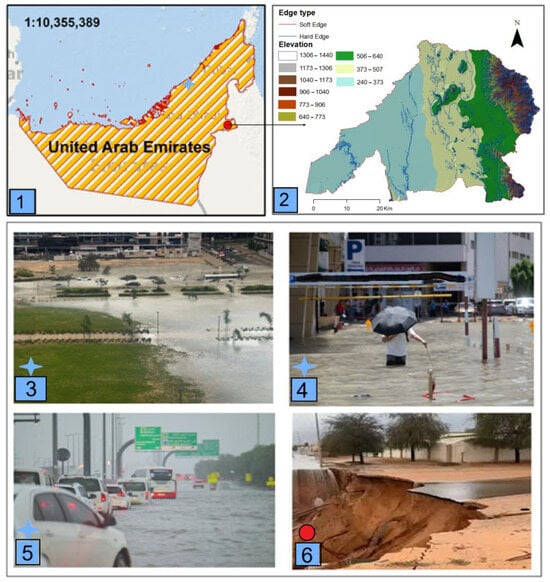
Figure 1
Open AccessReview
Differences of Occurrence, Distribution, and Factors Influencing Antibiotic Resistance Genes Between Freshwater and Seawater in China
by
Pei Jiang, Jiali Chang, Yu Xia, Xia Li, Liping Li, Xinhui Liu and Le Fang
Water 2025, 17(9), 1282; https://doi.org/10.3390/w17091282 - 25 Apr 2025
Abstract
The accumulation of antibiotic resistance genes (ARGs) in aquatic systems jeopardizes public health and ecological environments. This study investigates ARGs dissemination in freshwater and seawater, focusing on the sources, prevalence and influencing factors. In freshwater, ARGs primarily originate from medical/pharmaceutical wastewaters, industrial operations,
[...] Read more.
The accumulation of antibiotic resistance genes (ARGs) in aquatic systems jeopardizes public health and ecological environments. This study investigates ARGs dissemination in freshwater and seawater, focusing on the sources, prevalence and influencing factors. In freshwater, ARGs primarily originate from medical/pharmaceutical wastewaters, industrial operations, agriculture, and livestock sectors. By contrast, in addition to the above sources, seawater is contaminated by mariculture and terrestrial runoff. Comparative analysis indicates that fresh water hosts multidrug resistance, bacitracin resistance, sulfonamides, aminoglycosides, and beta-lactams, whereas seawater exhibits a wider range of ARGs encompassing sulfonamides, tetracyclines, aminoglycosides, beta-lactams, quinolones, macrolides, and chloramphenicol resistance genes. There was a stronger correlation between antibiotics and ARGs in seawater than in freshwater, especially in farmed waters. Human activities significantly contribute to ARGs pollution in both freshwater and seawater. Urbanization influences ARGs pollution in freshwater, while offshore distance and coastal economic development dictate ARGs selection pressure in seawater. This study shed lights on the current ARGs pollutant status in marine and freshwater ecosystems in China, providing a scientific foundation for water health preservation and ecosystem safeguarding measures.
Full article
(This article belongs to the Special Issue Water Safety, Ecological Risk and Public Health)
►▼
Show Figures
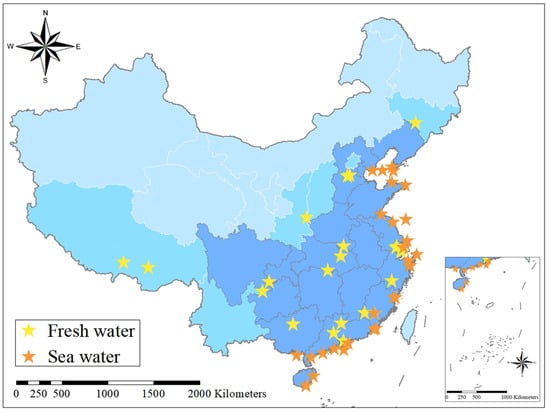
Figure 1
Open AccessReview
Statistical Process Control in the Environmental Monitoring of Water Quality and Wastewaters: A Review
by
Greicelene Jesus da Silva and Alisson Carraro Borges
Water 2025, 17(9), 1281; https://doi.org/10.3390/w17091281 - 25 Apr 2025
Abstract
Water and wastewater monitoring plays a fundamental role in understanding the impact of anthropogenic activities on natural systems. Statistical process control (SPC) is a technique, among other statistical methods, for controlling systems and improving quality, with early applications in water quality and wastewater
[...] Read more.
Water and wastewater monitoring plays a fundamental role in understanding the impact of anthropogenic activities on natural systems. Statistical process control (SPC) is a technique, among other statistical methods, for controlling systems and improving quality, with early applications in water quality and wastewater monitoring. This study aims to clarify the basic concepts of the tool, study how it has been used in water and wastewater monitoring, and highlight the limitations and opportunities for research. SPC still needs necessary adaptations and considerations to deal with the limitations of environmental data, especially in open systems such as water bodies. Future research should explore suitable statistical parameters and chart options, which could represent financial savings and effectiveness in monitoring, as, to date, the choice of these parameters has been based on monitoring studies conducted at the industrial level, where the variability in the monitoring variables is easily controlled. Finally, the tool shows promise for potential use in extreme events, such as droughts, major floods, storms (cyclones), and catastrophic environmental incidents (such as dam bursts), as long as the analysis is supported by a base period.
Full article
(This article belongs to the Special Issue Ecohydrological Processes, Environmental Effects, and Integrated Regulation of Wetland Ecosystems, 3rd Edition)
►▼
Show Figures

Figure 1
Open AccessArticle
Sustainable Water Optimization Tool (SUWO): An Optimization Framework for the Water–Energy–Food–Ecosystem Nexus
by
Salim Yaykiran and Alpaslan Ekdal
Water 2025, 17(9), 1280; https://doi.org/10.3390/w17091280 - 25 Apr 2025
Abstract
Sustainable water management requires integrated approaches balancing competing demands and environmental sustainability. This study introduces the Sustainable Water Optimization Tool (SUWO), an open-source, Python-based simulation-optimization framework for basin-scale surface-water-resources management. SUWO employs the water–energy–food–ecosystem (WEF-E) nexus approach, utilizing a multi-objective genetic algorithm (MOGA)
[...] Read more.
Sustainable water management requires integrated approaches balancing competing demands and environmental sustainability. This study introduces the Sustainable Water Optimization Tool (SUWO), an open-source, Python-based simulation-optimization framework for basin-scale surface-water-resources management. SUWO employs the water–energy–food–ecosystem (WEF-E) nexus approach, utilizing a multi-objective genetic algorithm (MOGA) to generate Pareto-optimal solutions and facilitate a trade-off analysis among water uses through simulations of reservoir operations, hydro-energy production, irrigation, and flow regulation. SUWO integrates scenario analysis with multi-criteria decision making (MCDM), enabling the evaluation of various management, climate, and environmental scenarios. The framework was applied to the Sakarya River Basin (SRB) in Türkiye, a rapidly developing region pressured by water infrastructure development, hydroelectric power plants (HEPPs), and irrigation expansion. The SUWO-SRB model showed that while Non-dominated Sorting Genetic Algorithm II (NSGA-II) generally exhibited superior performance, NSGA-III presented a competitive alternative. The optimization results were analyzed across four management scenarios under varying hydrological conditions and environmental management classes (EMCs) for the near future. The model results highlight WEF-E nexus trade-offs. Maximizing energy production often impacts irrigation and the ecosystem, while prioritizing sustainable irrigation can reduce energy output. Dry conditions reduce hydropower and irrigation capacity, emphasizing water scarcity vulnerabilities. Ecological deviation negatively correlates with anthropogenic factors.
Full article
(This article belongs to the Special Issue Optimization-Simulation Modeling of Sustainable Water Resource)
►▼
Show Figures
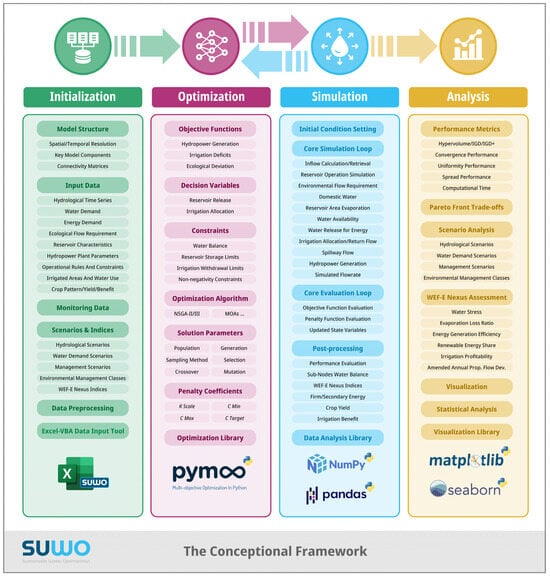
Figure 1
Open AccessArticle
Source, Transport, and Fractionation of Rare Earth Elements in Fluvial Sediments from a Typical Small Urban Basin (East Tiaoxi River, Eastern China)
by
Kunhua Yang, Qian Zhang, Bei Wang, Bin Liang, Qiang Lin and Weijiao Wang
Water 2025, 17(9), 1279; https://doi.org/10.3390/w17091279 - 25 Apr 2025
Abstract
As emerging contaminants, rare earth elements (REEs) have undergone significant anthropogenic enrichment in aquatic systems. This study investigates the REE concentrations, major metal elements, and grain size in surface sediments from the East Tiaoxi (ETX) River in eastern China, a small urban river
[...] Read more.
As emerging contaminants, rare earth elements (REEs) have undergone significant anthropogenic enrichment in aquatic systems. This study investigates the REE concentrations, major metal elements, and grain size in surface sediments from the East Tiaoxi (ETX) River in eastern China, a small urban river subjected to substantial anthropogenic influences. Total REE concentrations of surface sediments ranged from 133.62 to 222.92 mg/kg with MREE enrichment and HREE depletion. REE concentration and fractionation were strongly correlated with Ca, Fe, Mg, and Mn, which may reflect the control of clay minerals, Fe-Mn oxides, and specific heavy minerals, and differences in REE behavior between riparian sediments and riverbed sediments highlighted the impact of hydrodynamic sorting and chemical weathering on REE distribution. Anthropogenic activities, particularly urbanization, were found to increase REE concentrations, especially at urban-adjacent sites (e.g., RBS2 and RS2), while natural processes such as soil transport and chemical weathering primarily contributed to REE variation at other sites. The enrichment factor and ecological risk assessment revealed that the enrichment and moderate risks associated with REEs occurred in river sediments adjacent to urbanized areas, though agricultural impacts were less pronounced. The findings emphasize the combined influence of urbanization and natural processes on REE distribution and ecological risks in the ETX River basin and underscore the need to prioritize urban-derived REE contamination in environmental management strategies.
Full article
(This article belongs to the Special Issue Impacts of Environmental Change and Human Activities on Aquatic Ecosystems)
►▼
Show Figures
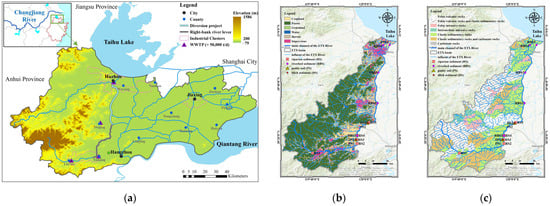
Figure 1

Journal Menu
► ▼ Journal Menu-
- Water Home
- Aims & Scope
- Editorial Board
- Reviewer Board
- Topical Advisory Panel
- Instructions for Authors
- Special Issues
- Topics
- Sections & Collections
- Article Processing Charge
- Indexing & Archiving
- Editor’s Choice Articles
- Most Cited & Viewed
- Journal Statistics
- Journal History
- Journal Awards
- Society Collaborations
- Conferences
- Editorial Office
Journal Browser
► ▼ Journal BrowserHighly Accessed Articles
Latest Books
E-Mail Alert
News
Topics
Topic in
Energies, Processes, Water, Sustainability, Buildings
Towards a Greener Tomorrow—Modern Trends in Cooling and Water Solutions
Topic Editors: Jaroslaw Krzywanski, Marcin Sosnowski, Karol Sztekler, Anna Pajdak, Anna Zylka, Anna Kulakowska, Karolina Grabowska, Dorian SkrobekDeadline: 30 April 2025
Topic in
Clean Technol., Membranes, Nanomaterials, Sustainability, Water
Removing Challenging Pollutants from Wastewater: Effective Approaches
Topic Editors: Shuting Zhuang, Jiang-Bo Huo, Suping YuDeadline: 31 May 2025
Topic in
Environments, Hydrology, Sustainability, Water
Critical Issues in Groundwater Pollution Monitoring and Risk Warning
Topic Editors: Wenjing Zhang, Wenxia Wei, Huan Huan, Zhi Dou, Yuanzheng ZhaiDeadline: 30 June 2025
Topic in
Agronomy, Climate, Earth, Remote Sensing, Water
Advances in Crop Simulation Modelling
Topic Editors: Mavromatis Theodoros, Thomas Alexandridis, Vassilis AschonitisDeadline: 15 July 2025

Conferences
Special Issues
Special Issue in
Water
Fishway Design and Development: New Challenges, Tools and Applications
Guest Editors: Ana L. Quaresma, Filipe Romão, Susana Dias AmaralDeadline: 28 April 2025
Special Issue in
Water
Application of Geospatial Information Systems and Technologies in Water Resources Management
Guest Editor: Muhammad Tauhidur RahmanDeadline: 30 April 2025
Special Issue in
Water
Transboundary River Management
Guest Editor: Carl Grundy-WarrDeadline: 30 April 2025
Special Issue in
Water
Water Quality, Wastewater Treatment and Water Recycling
Guest Editor: Memory TekereDeadline: 30 April 2025






